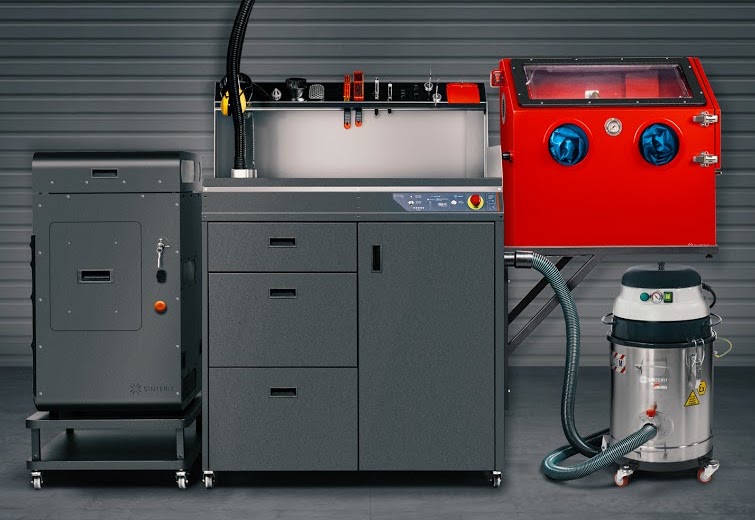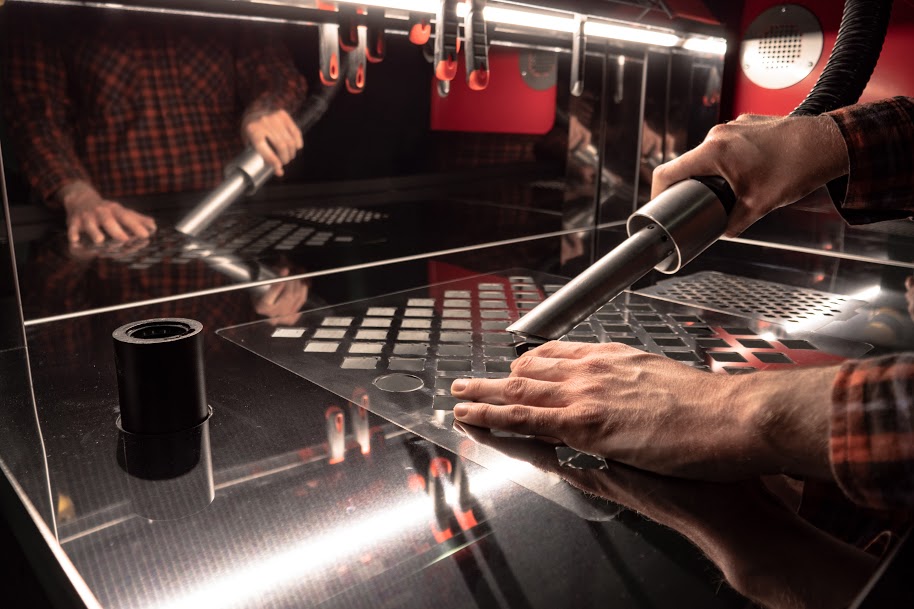Polish 3D printer manufacturer Sinterit has launched a Powder Handling Station (PHS) that it claims will take post-processing “to the next level.”
The company’s new workspace streamlines and accelerates the powder recovery process by integrating each of its post-printing accessories into one ergonomic platform. Ultimately, by combining its portfolio, Sinterit aims to better meet the needs of its more demanding desktop SLS users, as well those of clients in a broader range of industries.
“Sinterit was the first company in the world that brought SLS technology to the benchtop market,” said Michał Grzymala-Moszczynski, Sinterit’s Co-Founder and head of R&D. “Over the past years, we have been developing products by listening to our customers, and today we want to meet their needs again by improving the SLS experience.”
“We are the first to offer a complete solution that meets all our customers’ needs and the entire process of making printouts.”

The “complete” desktop SLS solution?
With its new workbench, Sinterit has added yet another additive add-on to its portfolio, that’s specifically designed to make post-printing powder recovery as clean as possible. The platform itself includes dedicated space for each of the firm’s post-processing tools, allowing users to complete their full 3D printing workflow within a single location.
Integrating each processing stage into one unit also enables adopters to complete short production runs with just one person, making them more efficient and cost-effective than before. Similarly, the PHS’ consolidated nature allows the sieving process to take place during post-processing, which allows the powder to be ready for immediate re-mixing after printing.
In order to further facilitate depowdering, the PHS includes features such as a suction hole and detachable 2 meter hose, that can be deployed as a localized vacuum cleaner. Once collected, all unsintered powder is able to be transported directly into a sieving module under the worktop, allowing users to conveniently recycle rather than waste the material.
Sinterit’s workbench has a large capacity too, making it capable of supporting several Lisa and Lisa PRO systems at once, and potentially ideal for the company’s heavier-duty clients. As a result, when each of these features are taken into account, the PHS is the most clean and efficient way for users to deploy Sinterit’s growing product ecosystem.

Sinterit’s growing accessory portfolio
Sinterit is known for its Lisa and Lisa PRO 3D printers, and since the release of the latter in 2018, it has focused on extending the applications of its flagship machines. While the company has developed new materials and made its systems more accessible to achieve this, it has also done so via a slew of Lisa add-ons that optimize its performance.
For instance, the company’s powder separator, which comes built-into the new PHS, automatically sifts through materials in a more rapid and precise alternative to manual sieving. Electroformed devices also tend to provide particles with a more even level of distribution, potentially yielding parts with a high level of strength and surface finish.
Sinterit’s ATEX vacuum cleaner can be integrated into the PHS too, providing users with a convenient method of tidying their work surface and preventing cross-contamination after printing. The product is also ATEX certified, meaning that once combined with the firm’s new platform, adopters can deploy potentially explosive powders knowing that it’s safe to do so.
Finally, the PHS features a pull-out draw for the company’s Sandblaster system as well, enabling clients to finish off the printing process in the same place that it started. Effectively then, Sinterit’s latest accessory ties together its earlier releases into a single user-friendly package, that enables adopters to get the best possible results from their Lisa machines.
To stay up to date with the latest 3D printing news, don’t forget to subscribe to the 3D Printing Industry newsletter or follow us on Twitter or liking our page on Facebook.
Are you looking for a job in the additive manufacturing industry? Visit 3D Printing Jobs for a selection of roles in the industry.
Featured image shows Sinterit’s new PHS with each of the company’s additive accessories installed. Photo via Sinterit.



